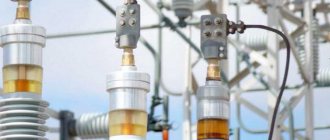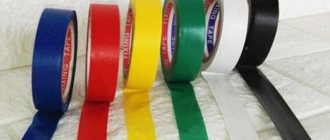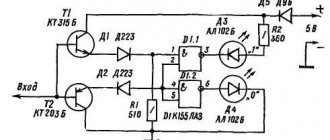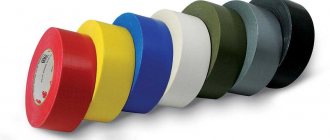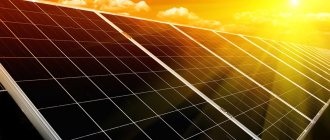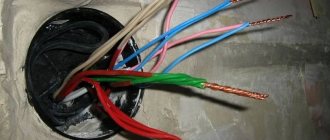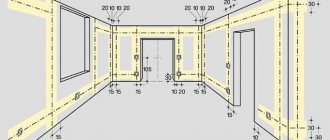Some materials used in electrical devices and power supply circuits have dielectric properties, that is, they have a high resistance to current. This ability allows them not to pass current, and therefore they are used to create insulation for live parts. Electrical insulating materials are designed not only to separate live parts, but also to create protection from the dangerous effects of electric current. For example, power cords for electrical appliances are covered with insulation.
Electrical insulating materials and their applications
Electrical insulating materials are widely used in industry, radio and instrument making, and the development of electrical networks. The normal operation of an electrical device or the safety of the power supply circuit largely depends on the dielectrics used. Certain parameters of a material intended for electrical insulation determine its quality and capabilities.
The use of insulating materials is subject to safety regulations. The integrity of the insulation is the key to safe work with electric current. It is very dangerous to use devices with damaged insulation. Even a small electrical current can have an effect on the human body.
Properties of dielectrics
Electrical insulating materials must have certain properties in order to perform their functions. The main difference between dielectrics and conductors is the large volumetric resistivity (109–1020 ohm cm). The electrical conductivity of conductors is 15 times greater compared to dielectrics. This is due to the fact that insulators by their nature have several times fewer free ions and electrons, which ensure the conductivity of the material. But when the material is heated, there are more of them, which helps to increase current conductivity.
There are active and passive properties of dielectrics. Passive properties are the most important for insulating materials. The dielectric constant of the material should be as small as possible. This allows the insulator not to introduce stray capacitances into the circuit. For a material that is used as a capacitor dielectric, the dielectric constant should, on the contrary, be as large as possible.
Vacuum as an insulator
A gas environment at extremely low pressure can create conditions when the gas simply cannot generate a noticeable current in the interelectrode gap. Such conditions are called insulating vacuum. When colliding with electrons or positive ions that escape from the electrodes, ionization of the low-pressure gas molecules occurs very rarely. The so-called high vacuum, under the condition of a constant voltage of up to 20 kV on the cathode surface, can do without breakdown at a field strength of the order of 5 MV/cm. If we are talking about the anode, then the voltage should be many times higher. And yet, a noticeable increase in voltage causes vacuum electrical insulating materials to lose their protective potential. Breakdown in this case can occur as a result of the exchange of charged particles in the cathode-anode connection. Dielectrics of this type are more often used in electronics. They are used both to accelerate electrons in conventional instruments and in X-ray machines to support high-voltage applications.
Isolation Options
The main parameters of electrical insulation include electrical strength, electrical resistivity, relative dielectric constant, and dielectric loss angle. When assessing the electrical insulating properties of a material, the dependence of the listed characteristics on the magnitude of electric current and voltage is also taken into account.
Electrical insulating products and materials have a higher electrical strength compared to conductors and semiconductors. Also important for a dielectric is the stability of specific values when heated, increased voltage and other changes.
Briefly about the main thing
Having studied the properties of thermal insulation materials, we can conclude that each of them is not ideal and is not without its drawbacks. There is no ideal insulation suitable for all purposes. When choosing the best option, you need to take into account the material of the insulated structure, its shape and position in space, operating conditions and other points. For example, fibrous materials that are afraid of moisture are not suitable for the underground parts of the building, and the steam room cannot be insulated with foam plastic, which releases harmful substances when heated.
Classification of dielectric materials
Depending on the power of the current passing through the conductor, different types of insulation are used, which differ in their capabilities.
By what parameters are electrical insulating materials divided? The classification of dielectrics is based on their state of aggregation (solid, liquid and gaseous) and origin (organic: natural and synthetic, inorganic: natural and artificial). The most common type of solid dielectrics that can be seen on the cords of household appliances or any other electrical appliances.
Solid and liquid dielectrics, in turn, are divided into subgroups. Solid dielectrics include varnished fabrics, laminated plastics and various types of mica. Waxes, oils and liquefied gases are liquid electrical insulating materials. Special gaseous dielectrics are used much less frequently. This type also includes a natural electrical insulator – air. Its use is due not only to the characteristics of air, which make it an excellent dielectric, but also to its cost-effectiveness. The use of air as insulation does not require additional material costs.
Polyurethane foam is an almost universal sealant...
The problem of sealing voids and cracks during the construction process has long been on the list of the most pressing ones. And without the use of new modern technologies, it would still remain there...
But with the advent of polyurethane foam, builders were able to breathe a sigh of relief, because this type of sealant proved to be not only very reliable in operation, but also an easy-to-use material.
The standard packaging of polyurethane foam is an aerosol package - a canister filled with a prepolymer, which is essentially liquid plastic, and a propellant, that is, a propellant gas.
Also, the packaging of the polyurethane foam includes a nozzle for applying sealant. With its help, the problem is solved even more effectively:
- filling all types of holes, even in the most difficult to reach places - crevices, cavities or cracks
- sealing joints or voids
- reducing the air permeability of the external walls of the building
- sound insulation improvements
- fixing and insulating window and door frames
- sealing and fixing of laying channels for pipes.
Solid dielectrics
Solid electrical insulating materials are the widest class of dielectrics that are used in various fields. They have different chemical properties, and the dielectric constant ranges from 1 to 50,000.
Solid dielectrics are divided into non-polar, polar and ferroelectrics. Their main differences are in the polarization mechanisms. This class of insulation has properties such as chemical resistance, tracking resistance, and dendrite resistance. Chemical resistance is expressed in the ability to withstand the influence of various aggressive environments (acid, alkali, etc.). Tregging resistance determines the ability to withstand the effects of an electric arc, and dendrite resistance determines the formation of dendrites.
Solid dielectrics are used in various fields of energy. For example, ceramic electrical insulating materials are most often used as line and bushing insulators in substations. Paper, polymers, and fiberglass are used as insulation for electrical devices. For machines and devices, varnishes, cardboard, and compound are most often used.
For use in various operating conditions, insulation is given some special properties by combining different materials: heat resistance, moisture resistance, radiation resistance and frost resistance. Heat-resistant insulators can withstand temperatures up to 700 °C; these include glass and glass-based materials, organosilites and some polymers. The moisture-resistant and tropical-resistant material is fluoroplastic, which is non-hygroscopic and hydrophobic.
Radiation resistant insulation is used in devices containing atomic elements. This includes inorganic films, some types of polymers, fiberglass and mica-based materials. Frost-resistant insulation is considered to be one that does not lose its properties at temperatures down to -90 °C. Special requirements are placed on insulation intended for devices operating in space or vacuum conditions. For these purposes, vacuum-dense materials are used, which include special ceramics.
...with unique capabilities
The technical characteristics of polyurethane foam really have no analogues. One of the main advantages of this sealant is its non-seasonal nature. Considering the temperature range at which the polymerization reaction occurs and the polyurethane foam does not lose its sealing quality, it is from -10 to +30. This means that for most regions of the country, this type of insulation is available almost all year round.
At the same time, polyurethane foam:
- has both thermal insulation, sound insulation and sealing properties
- provides assembly connection of structures or their parts
- able to expand and harden
- compatible with most traditional building materials - concrete, wood, glass, stone, with the exception of silicone, Teflon, polypropylene and polyethylene
- is an environmentally friendly material that does not pose a threat to people and the environment.
Liquid dielectrics
Liquid electrical insulating materials are often used in electrical machines and apparatus. In a transformer, oil plays the role of insulation. Liquid dielectrics also include liquefied gases, unsaturated vaseline and paraffin oils, polyorganosiloxanes, distilled water (purified from salts and impurities).
The main characteristics of liquid dielectrics are dielectric constant, electrical strength and electrical conductivity. Also, the electrical parameters of dielectrics largely depend on the degree of their purification. Solid impurities can increase the electrical conductivity of liquids due to the proliferation of free ions and electrons. Purification of liquids by distillation, ion exchange, etc. leads to an increase in the electrical strength of the material, thereby reducing its electrical conductivity.
Liquid dielectrics are divided into three groups:
- petroleum oils;
- vegetable oils;
- synthetic fluids.
The most commonly used petroleum oils are transformer, cable and capacitor oils. Synthetic fluids (organosilicon and organofluorine compounds) are also used in apparatus construction. For example, organosilicon compounds are frost-resistant and hygroscopic, therefore they are used as an insulator in small transformers, but their cost is higher than the price of petroleum oils.
Vegetable oils are practically not used as insulating materials in electrical insulating technology. These include castor oil, flaxseed oil, hemp oil and tung oil. These materials are low-polarity dielectrics and are used mainly for impregnation of paper capacitors and as a film-forming substance in electrical insulating varnishes, paints, and enamels.
Gaseous dielectrics
The most common gaseous dielectrics are air, nitrogen, hydrogen and SF6 gas. Electrical insulating gases are divided into natural and artificial. Natural air includes air, which is used as insulation between live parts of power lines and electrical machines. As an insulator, air has disadvantages that make it impossible to use in sealed devices. Due to the presence of a high concentration of oxygen, air is an oxidizing agent, and in inhomogeneous fields the low electrical strength of air appears.
Nitrogen is used as insulation in power transformers and high-voltage cables. Hydrogen, in addition to being an electrical insulating material, is also a forced cooling agent, so it is often used in electrical machines. In sealed installations, SF6 gas is most often used. Filling with SF6 gas makes the device explosion-proof. It is used in high-voltage circuit breakers due to its arc-extinguishing properties.
Sleeve electrical insulation
This is a material from the group of mechanical protective devices that provides external physical protection. Typically, flexible sleeves are used to protect the conductors of power units, transformers and cables. Traditional insulating tape works on the same principle, the task of which is to create a physical barrier. The sleeves also act as a layer that does not interact in any way with the current source at the electrochemical level. However, among the disadvantages of this material is rapid wear.
Organic dielectrics
Organic dielectric materials are divided into natural and synthetic. Natural organic dielectrics are currently used extremely rarely, so the production of synthetic ones is increasingly expanding, thereby reducing their cost.
Natural organic dielectrics include cellulose, rubber, paraffin and vegetable oils (castor oil). The majority of synthetic organic dielectrics are various plastics and elastomers, often used in electrical household appliances and other equipment.
Inorganic dielectrics
Inorganic dielectric materials are divided into natural and artificial. The most common natural material is mica, which is chemical and thermal resistant. Phlogopite and muscovite are also used for electrical insulation.
Artificial inorganic dielectrics include glass and materials based on it, as well as porcelain and ceramics. Depending on the application, the artificial dielectric can be given special properties. For example, for bushings, feldspathic ceramics are used, which have a high dielectric loss tangent.
Fibrous electrical insulating materials
Fibrous materials are often used for insulation in electrical devices and machines. These include materials of plant origin (rubber, cellulose, fabrics), synthetic textiles (nylon, nylon), as well as materials made of polystyrene, polyamide, etc.
Organic fibrous materials are highly hygroscopic, so they are rarely used without special impregnation.
Recently, instead of organic materials, synthetic fiber insulation has been used, which has a higher level of heat resistance. These include glass fiber and asbestos. Glass fiber is impregnated with various varnishes and resins to increase its hydrophobic properties. Asbestos fiber has low mechanical strength, so cotton fiber is often added to it.
Source - fb.ru



